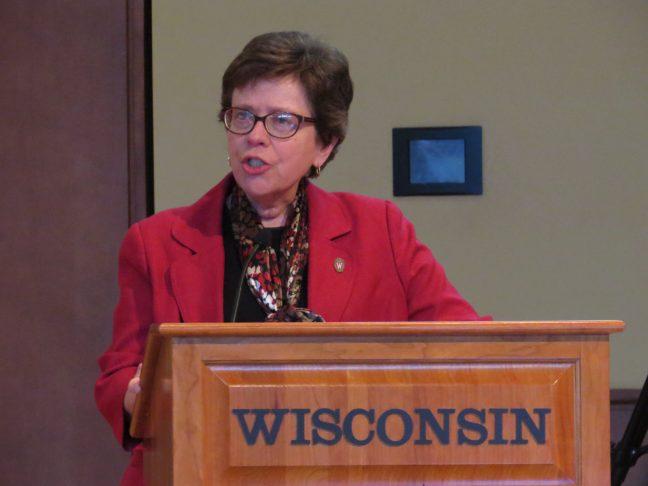In her “State of the University” speech, University of Wisconsin Chancellor Rebecca Blank reviewed how the school has met a host of challenges, ranging from financial difficulties imposed by the pandemic, to recruiting more diverse students — all while keeping UW a competitive public research university.
Despite a host of difficulties brought on by the pandemic, Blank said UW made many strides over the past year. Blank touted 2021’s freshman class was the largest, most diverse freshman class in the university’s history, with 25% of the 8,400 students being of students of color.
“We didn’t set out to enroll a class of this size, but to be a ‘hot’ school nationally is not a bad problem to have,” Blank said in her address.
Fall semester brings new opportunities for students to incorporate mindfulness into their lives
UW also placed first in the Washington Monthly’s rankings of U.S. public universities and received the Department of Education’s designation of a “Green Ribbon School,” which acknowledges universities committed to sustainability, Blank said.
Climate activists on campus, however, have criticized UW’s private foundation for investing in fossil fuels, according to the Wisconsin State Journal.
Despite UW making improvements in diversity, Blank said there’s still a lot of work to do, pointing to UW’s misstep of starting school on the same day as the major Jewish Holiday, Rosh Hashanah.
To improve diversity, UW has been creating scholarships to attract underrepresented students of color, Blank said. An underrepresented racial minority means a group that has been historically disadvantaged in higher educations, according to UW’s race and pedagogy website. This group includes African Americans, Hispanic/Latinxs, Native Americans and Southeast Asians.
UW faculty struggle to receive approval for in-person instruction accommodations
The university’s six-year graduation rate is its currently at highest ever, which Blank said put UW among the top 10 U.S. public universities. The four-year graduation rate broke the school’s record at just shy of 73% of students, with an added note that the graduation gap between undergraduate white students and historically underrepresented students has been cut almost in half over the last decade.
Blank also addressed the university’s budget, which at the beginning of the pandemic was projected to fall short by about $319 million between lost revenue and additional pandemic-related expenses.
But at the end of fiscal year on June 30, Blank said the university had “only” lost $226 million. She cited the return of funds from the state and less-than-expected losses in athletics and research departments as reasons for the eased deficit, as well as the large freshman class’ tuition dollars.
“This past year was difficult but we are in a much better place than we were last fall,” Blank said. “I hope you will all be thinking about how we can apply what we’ve learned in this pandemic to improve some aspect of our work. This is a great university, and our reputation is stronger than ever – but we can be even better.”













